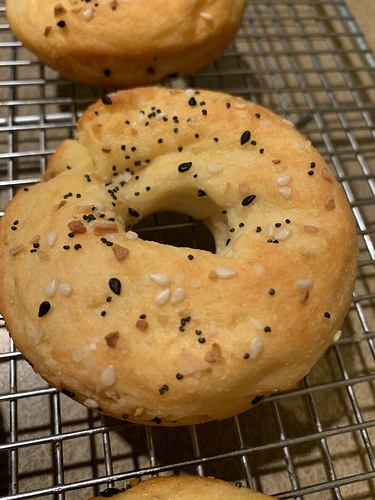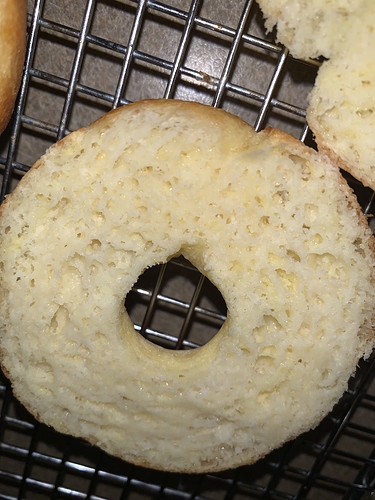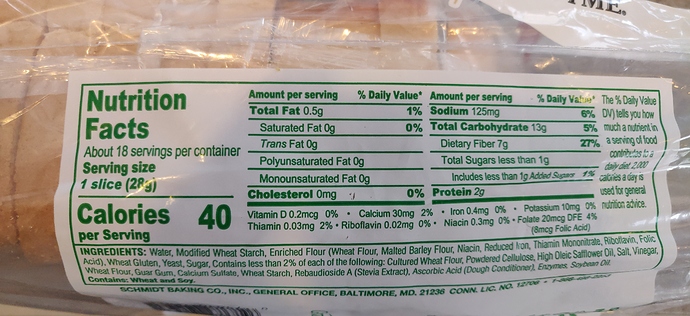So during these anxiety ridden times I find myself looking for self soothing in the form of something sweet. I mean, I just received a clip of a spanish doctor who was crying and telling the audience that he had to unhook anybody who was over 65 from a ventilator to give it to somebody younger, and then sedate these patients in anticipation of their death. This is Madrid- where there is total havoc right now. And I am 67, so there you go. How totally mind blowing and horrible.
I do keep anything sweet keto, even if sometimes my carbs got somewhat too high. And yeah, I know about the insulin reaction which can occur when the tongue tastes sweet, even if it is fake sweet and less than 20g carbs per day are eaten.
But I had ordered a box of goodies from netrition a while ago, and it arrived today.
I am holding in my hand a product by Lakanto which was advertised as ZERO carbs. It is a chocolate syrup that I thought I could use to make chocolate milk ( almond milk) or maybe on keto pancakes/crepes/chaffles. So on the front of the bottle it really says ZERO carbs!!! Then on the back it says total carbs 14g or 5% and a serving size is 2 Tbsp. Of this- dietary fibre 1g or 4%, total sugars 0% sugar alcohol 13g. And as far as I have understood now, sugar alcohol is like erythtrol or xylitol - so that’s OK. But THEN it says underneath in a list, that this product contains potato STARCH. Starch? POTATO? I have had nothing potato in 4 months. And “cultured dextrose”. WTF is cultured dextrose? Dextrose sounds like sugar to me?! So why isn’t this listed as carbs? Is it too low to mention?
What is all this mumbo jumbo - why don’t they simply tell it like it is? Or are they doing that and potato starch is not considered a carb? How can this be? This is so confusing.
Diet sweets
That doesn’t sound like anything I’d eat. Take for example preshredded cheese everyone makes fat head dough with. Do you know why it works? It’s loaded with potato starch. Starch makes lovely bread. Yet the ingredient list claims zero carbs. I’ve learned I literally have to make everything from scratch. Make yourself done chocolate sauce with Erythritol, cocoa powder and water.
Lakanto is ok… Kind of thin and watery. I prefer anything made with Sucralose  . I eat keto sweets every day. No problems. No worries
. I eat keto sweets every day. No problems. No worries
Here is a fathead bagel I made with preshredded cheese. It was delicious. My blood sugar went from 70 to 130 after one, and they weren’t big at all. I used the same recipe with cheese I shredded myself. It was a mess and cooled into a hard blob of overcooked cheese. Conclusion: Starch even in small amounts, so small labels don’t count it as carbs will make my blood sugar spike.
The real issue is not the amount per serving, but the amount per 100 g of the item. In civilised countries, manufacturers are required to list the quantities per 100 g, regardless of the serving size they choose. The law is different in the U.S., and manufacturers are allowed to choose a serving size that lets them claim 0 g of ingredients they don’t want you to know about. One thing you can try is to look up the product in the USDA food database and see what the quantities are for a more reasonable-sized serving, or per hundred grams.
This makes a lot of sense Paul. I have used that link many times and I didn’t know it existed until you posted it a while ago. The first time I realized labels were BS was when I read the back of a seasoning container which had starches and sugars that I recognized (it literally said “sugar”), yet had zero carbs, calories, fat, etc. A 12 oz container had 240 servings.
I have to have a little treat every day too with my coffee. What are your favorite treats Chris? I normally go for scones, muffins, or cookies I make with erythritol and almond flour. They are small, satisfy, and last all week in the freezer because I only have one a day. Do you like yogurt? If so, something I discovered is mixing a bit of sugar-free syrup (Sucralose sweetened) with sour cream, then I crumble in a flourless brownie or cookie.
I was doing BHU bars at least once a day, but now my daily “treat” is 1 egg with about 2 t coconut flour, 2 T cream and some shredded unsweetened coconut. I sweeten it with a little erythritol and stevia. I also make it with cocoa sometimes. I find the BHU bars very triggering with zero satiety. My concoction makes me feel treated but like I’ve actually eaten something.
Oh yeah LOL forgot to mention… 30 seconds on high in the microwave, stir, 30 seconds more. If I don’t put cocoa in it, I add vanilla extract and a little nutmeg.
I’ve seen recipes for similar but haven’t tried them yet. I tell myself not to eat any sweets at all but isn’t quite working out as I still have processed keto treats in the pantry and go through phases with those. Don’t care for weeks but if I have one it tends to trigger more. Thank you for sharing this.
What’s so civiliZed about that? MANY MANY MANY things wouldn’t have the serving size of 100g, doing that is equally as stupid as years ago when a bottle of Pepsi would have something like 3g of sugar per serving, and 5 servings in a small personal bottle.
For YEARS now (almost) everything shows in both typically serving size as well as it’s amounts in grams. Being a label reader I’m constantly looking as I track macros and couldn’t even tell you last time I saw those old games being played.
That sounds like a strange conclusion to come up with without a lot of evidence.
The other ingredients (almond flour, cream cheese, eggs, baking powder, sesame seeds, poppy seeds?) would have far more carbs (sugar and starch) in them than the starch added to the pre-shredded cheese.
BTW, one of the recipes I was looking at had this comment – “Be sure to use the prepackaged, preferably part skim, shredded mozzarella cheese in this recipe. Fresh mozzarella contains too much water and your bagels won’t turn out as they should.” Maybe that’s why you had the hard blob?
And, if you’re measuring by cups, there may be a significant difference between how much cheese was actually used. Measuring by weight may be a problem as well, if the fresh contains more water.
Fresh mozzarella is wet and stored in whey which is liquid. I used a brick of part skim mozzarella. I make baked goods all the time that contain more almond flour and cream cheese that cause hardly no raise in blood sugar. It really isn’t a far-fetched, strange conclusion that starch raises blood sugar.
Oh geez, my GF makes something different about 1/2 the time 
Yesterday was PB cookies 
She makes a lot of blueberry stuff… Lemon bars, chocolate mud cakes, etc, etc.
And all of this stuff ranges anywhere from pretty good, to amazing 
Starch does raise blood sugar. But not a significant amount for “such a small amount that the label shows nothing”. Most or all of those other ingredients had starches as well. Some in label-measured amounts.
Easy enough to test. Isolate the suspected cause. What happens to your blood sugar when you just have just a little bit of the pre-shredded cheese? The amount that would be in one bagel (or however much you ate). You could even compare it to the reaction of a similar serving of freshly shredded.
U.S. law permits manufacturers to claim 0 grams of an ingredient when the amount per serving is under 0.5 g, and “less than 1 g” if the amount per serving is under 1.0 g. In such cases, I always assume that the actual amount is 0.4999999999 g or 0.999999999 g, respectively.
The point of the 100 g listing on nutrition labels, in countries that require it, is to prevent such shenanigans, not that 100 g is necessarily a reasonable serving size. British and European food manufacturers are still allowed to list the amounts per serving and to determine which serving size to use, but the 100 g listing takes all the fun out of the game, so the serving sizes tend to be more reasonable.
In the case of the Pepsi serving you mention, the 3 g of sugar per serving translates to 15 g per bottle, which is the true serving size. And 100 g of most liquids is about 0.1 litre, so a more reasonable serving size might be 200 grams in such a case. Fifteen grams of sugar per 200 mL is an awful lot.
Agreed, but that was also my point. You really never see those crazy serving sizes on things anymore. it’s more or less always a realistic size that would actually be consumed while the 100g thing may not technically be misleading but it’s not accurate either. Example would be my low carb bread I buy. It’s 6g net per serving, a serving is one slice. 99% of people know that they’ll use 2 slices of bread almost every time. If I only had 100g to go by OR if it said a serving size was 28g (which it is in this case) that still doesn’t tell me how much my sandwich is gonna cost me carb wise… unless I weigh my bread which is just stupid and shouldn’t be needed to know a number that could have easily been put on the label.
In countries that require it, the 100 g label is placed right next to the label based on the serving size, so you’d get your 28 g listing along with the 100 g listing. The point, as I mentioned, is to prevent manufacturers from defining the serving size as a quarter of a slice, or whatever, so as to give the purchaser the impression that there’s no sugar in the product. The purchaser can know quite well just how much sugar the product contains, because the number of grams per 100 is right there. I don’t know where you shop, but the stores in the northeast part of the U.S. where I live stock a lot of brands that still try to scam buyers this way. Requiring the additional label is a much simpler solution than trying to define reasonable serving sizes for hundreds of thousands of products. U.S. law was influenced by the manufacturers; say what you will about the European government, it is better at consumer protection.
In my local supermarket there is a brand of stevia sweetener mixed with sugar (sucrose) that claims on the front of the package to be sugar-free and to contain no calories. The nutrition label appears to go along with this, because the serving size is so small and, as I mentioned, U.S. law allows them to round down to 0 any amount under 0.5 per serving. It’s only when you read the list of ingredients and see sucrose listed that you realise you’ve been had. If they had to list the quantity of sucrose per 100 g of product, it would be obvious just how much sugar it contains. The old Roman warning, caveat emptor, still applies.




